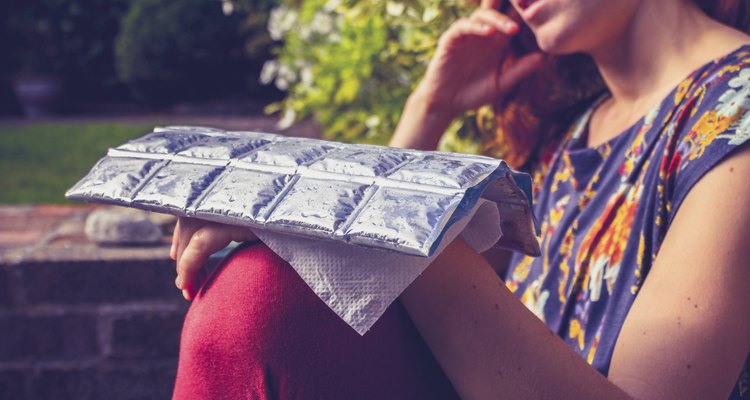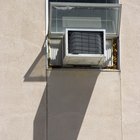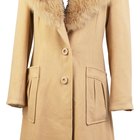
lofilolo/iStock/Getty Images
Both wet and dry heat can relieve sore muscles, but some people prefer one method over the other. Many experience a greater level of immediate relief from wet heat, but dry heat generally lasts longer and offers more convenience. Oftentimes, deciding between the two is a matter of personal preference. Knowing the advantages and disadvantages of both options can help you decide which to use.
Basic Differences
Sources of dry heat draw moisture out of the skin while sources of wet heat do not. As Vert Mooney, MD, explains on the Spine Health website, using dry heat may even dehydrate skin. Dry heat sources often prove more convenient to apply and many people find it easier to maintain the proper level of heat for an extended length of time with dry heat sources. Some people prefer moist heat, believing that the moisture helps the heat permeate sore muscles.
Examples of Wet Heat
The most common examples of wet heat include hot water bottles, hot baths, and moist gel heating packs. Hot baths provide an enveloping heat which soothes sore muscles and also relaxes other muscles in the body that may have tensed up in response to the source of pain. Warm baths with massaging whirlpool jets often prove especially helpful. Hot water bottles and gel packs can stay warm up to 30 minutes and the portability of these heat sources offers convenience. The Merck Manual advises taking special care to avoid burns when using hot packs and never apply the packs directly to the skin; a layer of cotton cloth must always separate the pack from your flesh.
Examples of Dry Heat
Common forms of dry heat include electric heating pads and heat wraps. Unlike most forms of wet heat, heating pads maintain a consistent heat level throughout use. Some heating pads automatically turn off after a set amount of time passes, but typically, you may turn them back on even if this happens. Heat wraps do not plug into the wall and therefore present a more portable, convenient dry heat option. These wraps adhere to clothing and press directly against the skin; the heat level remains low but relatively constant and may last up to eight hours.
General Precautions
If the area around the sore muscle appears swollen or bruised, an ice pack instead of heat can reduce the swelling. You should always monitor an area being treated, whether using wet or dry heat. If the area begins overheating, the heat source must be removed immediately before it causes a burn. People with dermatitis, diabetes, heart disease, liver disease, kidney disorder or reduced skin sensation must consult professional medical counsel before attempting any home heat treatment.
Related Articles

The Purpose of a Heat Exchanger

Grilling Instructions for Rib-Eye Steak

Heat Rash and Hot Yoga

Uses of Thermal Insulators

What Is a Paraffin Bath?

How to Use a French Cooktop

How to Hot Cut Nylon Webbing at Home

The Difference Between a Chafing Dish & ...

How to Keep Ham Slices Warm for ...

How to Heat Frozen Meatballs

How to Clean a Camelhair Coat

How to Shrink Clothes with a Hairdryer

How to Heat White Corn Tortillas

How Long Should One Leave a Detox Body ...

How to Cook Steak With Red Wine in a ...

The Disadvantages of Passive Solar ...

Why Heat Does Not Transfer Through a ...

Can a Wool Coat Be Worn in the Rain?

Microfiber vs. Cotton Clothes

How to Clean an Oilcloth Coat
References
Writer Bio
Caitlynn Lowe has been writing since 2006 and has been a contributing writer for Huntington University's "Mnemosyne" and "Huntingtonian." Her writing has also been in "Ictus" and "Struggle Creek: A Novel Story." Lowe earned her Bachelor of Arts degree in English from Huntington University.
Photo Credits
lofilolo/iStock/Getty Images